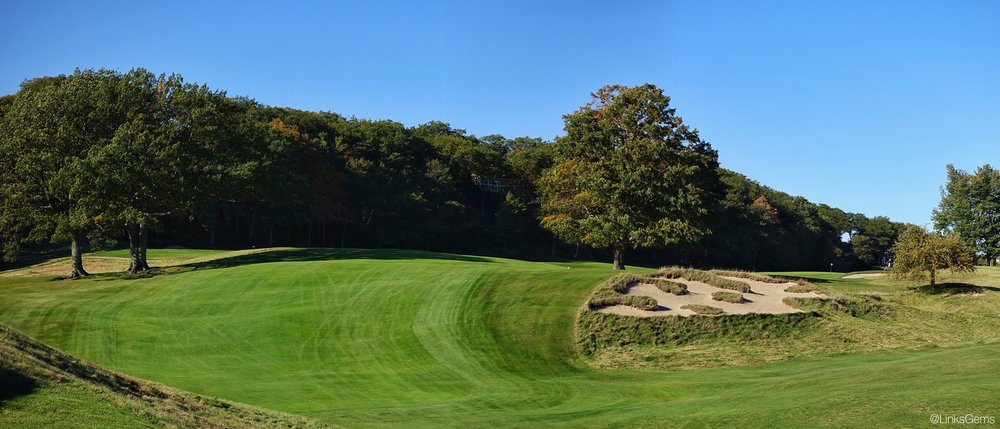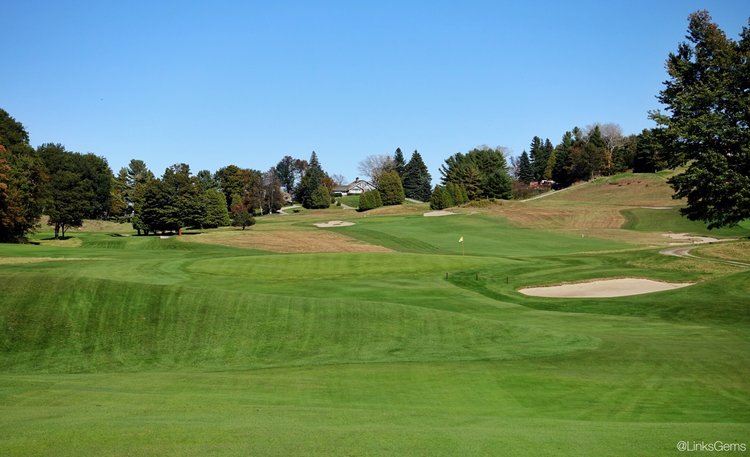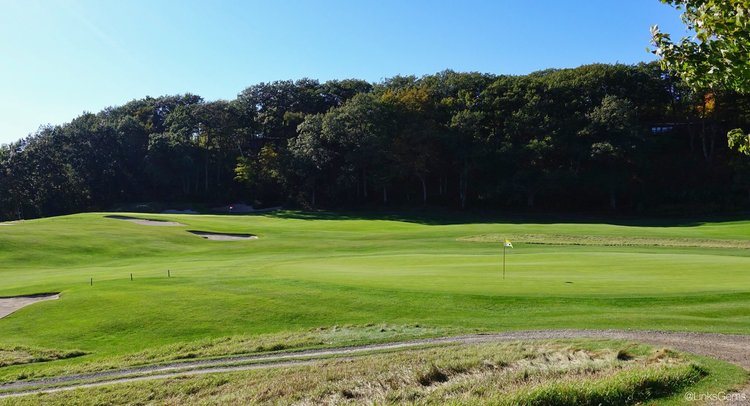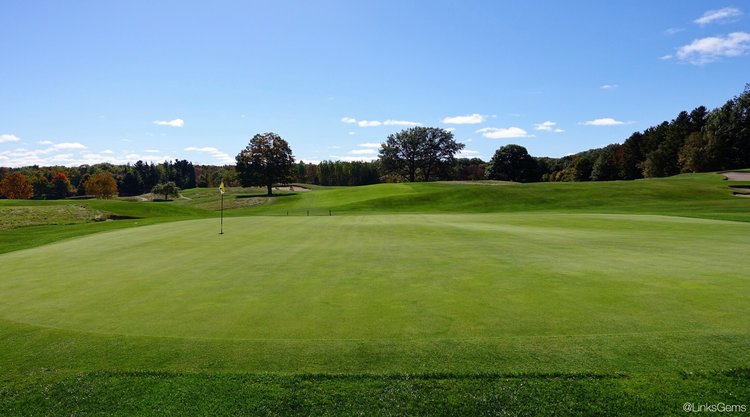In part two of our latest Architects Roundtable (read part 1 here), we are joined again by Andy Staples (@buildsmartrgolf), Mike DeVries (@DeVriesDesigns), Kris Spence (@kspdesign) and Brett Hochstein (@hochsteindesign) to discuss favorite holes in golf and rules they would like see changed.
What’s your favorite hole in golf?
DeVries: Crystal Downs par-4 6th which plays 384, 351 or 289 depending on which tee you play. This medium-to-short par four doglegs slightly to the right. The drive hits over a deep valley that bisects holes 5-8 in different ways. The far right side of the valley has the “Scabs” bunker complex, which is artfully notched into the hill and makes a formidable hazard if you happen to land in it.
At the top of the hill in the right rough, about 150 yards from the green, is a big old maple tree that thwarts a good drive or a 2nd shot from a tee shot that finished in the valley. The fairway heaves up and down to the largest green on the course. It is one of the greatest greens in golf. A prominent ridge/bump that sits in the middle of the green sets up the rest of the contours. To the far left of the center, bump is a small pinnable plateau. In between the bump and the plateau is a skinny valley which bleeds into a larger but more subtle back plateau on its right. The bump, plateaus and valley combine for endless fantastic flagstick locations. You can spend hours just putting around this green.
It’s a spectacular hole for many reasons, but the real reason it is my favorite hole in golf is sentimental. When I was twelve and I was playing with my grandmother, I hit it from the forward tee to the top of the hill and struck a 6-iron to about 6 feet, made the putt for my first birdie at The Downs. My ‘Mema’ proclaimed, “Well, that’s pretty good, why don’t we call it a day?” And we went in. She must have figured that it wasn’t going to get any better and we should quit while we were ahead. A smart woman, because it is still my favorite golfing memory!
Photo credit: Jon Cavalier @linksgems
Staples: The hole I love playing the most is the Road Hole on the Old Course. It’s especially fun seeing someone who’s never played it before. It’s the most memorable hole from my first trip to Scotland. Nothing beats hitting it over the hotel or chipping off the road. It’s also really cool to walk the hole on a Sunday.
I also have a favorite hole I’ve used as inspiration in my work, the 485-yard par-5 6th hole at Carnoustie, Hogan’s Alley. I love the risk-reward strategy of tucking the tee right up against a dead straight property line. It dares you to challenge the out of bounds on the left, and bunkers on the right, into the prevailing wind. Play safe off the right, and it brings in a series of hazards and an uncomfortable 2nd shot, and ultimate approach to the green. The hole has withstood the distance advances, and still plays as an intimidating par-5 for most golfers. I really love it.
Hochstein: There are too many great ones. I’m going to qualify this with the following criteria: it should be a hole that challenges and engages both the aerial and the ground game, and it should also have strategic components that vary day to day. There are a handful of holes that jump to mind —the “Cardinal” (3rd) at Prestwick, 14 at St Andrews, The “Klondyke” (4th) at Lahinch, The Road Hole, and the 8th at Crystal Downs (strong trend of 3 shot holes here…). If I am picking based solely on strategic variety, I’m going with the 14th at St Andrews. The decision on the second shot is one of the best moments in golf. It’s highly influenced by the day’s hole location and provides a great thrill. Do you go over, short or left of the Hell Bunker? The courageous play is over the bunker which provides quite a thrill.
The question though is about favorite, and that means the intangibles of emotional and historical components are key to the decision. That leaves my pick as the Road Hole at St Andrews. In a day full of exciting, nerve-wracking tee shots, the 17th tee sits behind the old wall and rail sheds and associated out of bounds, is at or near the top for adrenaline, matching maybe only the 1st and 18th holes for that type of rush. What sets it apart though is the strategic component and advantage gained by playing more aggressively down the blind right side, flirting with out of bounds as well as having to get the ball up sooner over the rail sheds. That right side opens up the green for a running approach to find more areas of the green, but the judgment and execution for doing so are still both incredibly difficult. If you don’t find the green, which is typically the case, the short game possibilities for your next play are almost endless—the most famous and fun being the putt corralled around the deep Road Bunker to a hole sitting just behind it. The challenge of making a famous and memorable 4 (which I am 0-4 on) is so great and so desired each time stepping up onto that tee. To do so requires thought, bravery, execution, and creativity. You can’t ask for much more than that in a single hole, especially when you sprinkle in a strong dose of aura and history.
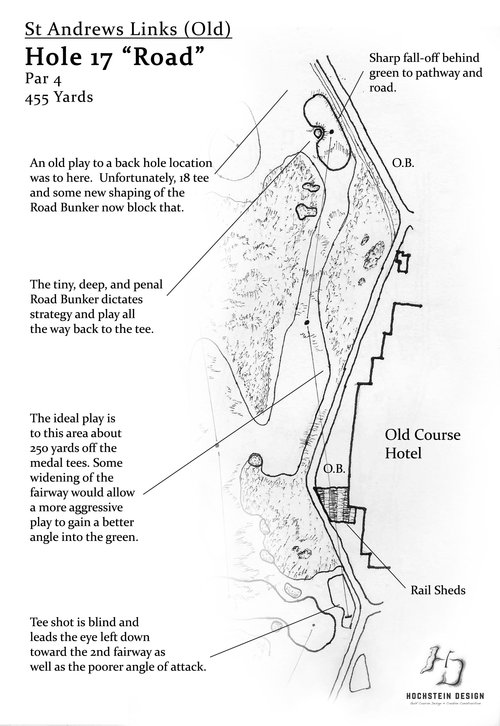
Spence: I have found that many of the world’s greatest golf holes look easy but play difficult. That’s the case for my favorite hole that I’ve played, the par-5 13th at Augusta National. It possesses every element that I look for in a great golf hole.
Attainable for all – The distance of the hole makes it fun for all. It’s not too long, and as we see in the Masters, it dangles the carrot of getting home for every style of player. Hopefully, it will remain this way…
Multiple Strategic Angles – Off the tee, players have the choice of venturing left near Rae’s Creek or to the broad part of the fairway on the right. The riskier play is left near the creek. If pulled off, it reaps the reward of a flatter lie, a better angle and a shorter approach shot. The left side gives a great opportunity to get home in two and make birdie or even an eagle.
Play away from the creek to the right and safe side and the second shot is not as enviable. The right side presents a rare downhill and sidehill lie which enhances the challenge of hitting over Rae’s Creek. Missing short in the creek is a penalty and over the green might be worse which brings in the thought of the layup and its options.
The further you lay up near the green, the more perpendicular and shallow the short pitch over the creek becomes. It limits the amount of spin a player can generate and increases the challenge of the shot.
Great Green – While I don’t believe that the 13th is Augusta National’s best green, it’s quite good.
Beauty, Scale & Memorability – I have yet to play a more stunningly beautiful hole. Television does not do the 13th justice. The expansive width and topographic change are far more dramatic in person. The beauty, scale and strategy make the 13th one of the most memorable holes in all of golf.
If you could change one rule in golf what would it be?
Staples: I would figure out how to place greater limits on the time someone can take to make a swing. How long it takes people to line up their shot, read the green, check the wind, etc., is pretty ridiculous. It’s one of the unintended consequences of new players watching professional golf – that’s how they learn! I know of many situations where a golfer that plays more freely, with less paralysis by analysis, will shoot the same score, or even less. But most importantly, they play in less time, speeding up the game. The time it’s taking to play 18 holes is killing the game.
DeVries: I find that the stroke and distance rule for a lost / OB ball is not followed by most everyday golfers and could simplify the rules by just taking a drop or hitting from the current position with a stroke penalty. It would encourage more aggressive play by good players because OB would face less penalty. We would see more attempts to cut the corner on holes on the edge of forest or boundaries because the penalty was similar to that of a water hazard. The lateral drop would be easier for people to score, understand and speed up play.
Spence: Outside resources (see example below) such as slope percentage and directional books for reading greens should not be allowed. On tour, players have his or her caddy and a book. These books are created by an outside entity that use green reading data and digital scanning to uncover greens most subtle intricacies. They diminish the advantage players gain if they are skilled at picking up the subtle breaks and slopes of the green. From an architect’s perspective, these books make it damn near impossible to fool and challenge with deceptive slopes on the green.
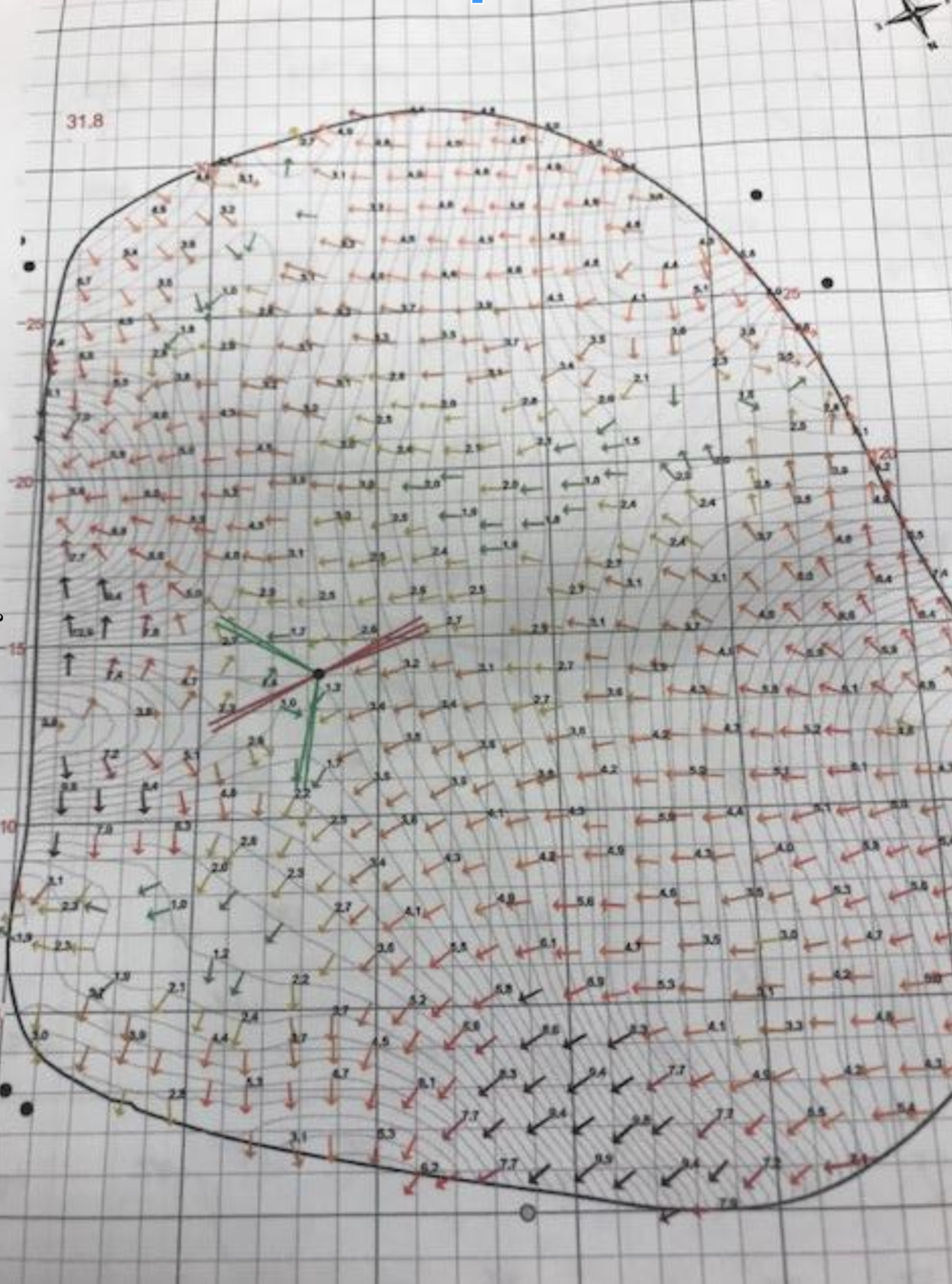
Hochstein: I’m surprised that the more I think about changing different rules, the more I find myself justifying them. Since I love playing ground shots around the green and would like to encourage more of that among all golfers, I could see perhaps doing something about allowing some relief about sprinkler heads in your line or allowing players in your line and off the green to mark their balls. I’m typically all for “rub of the green,” but there was no artificial irrigation in the beginning, and there is no way your opponent is intentionally trying to “stymie” you off the green. So let’s still allow you to use that putter or 3 iron when something gets in the way.


 by
by 